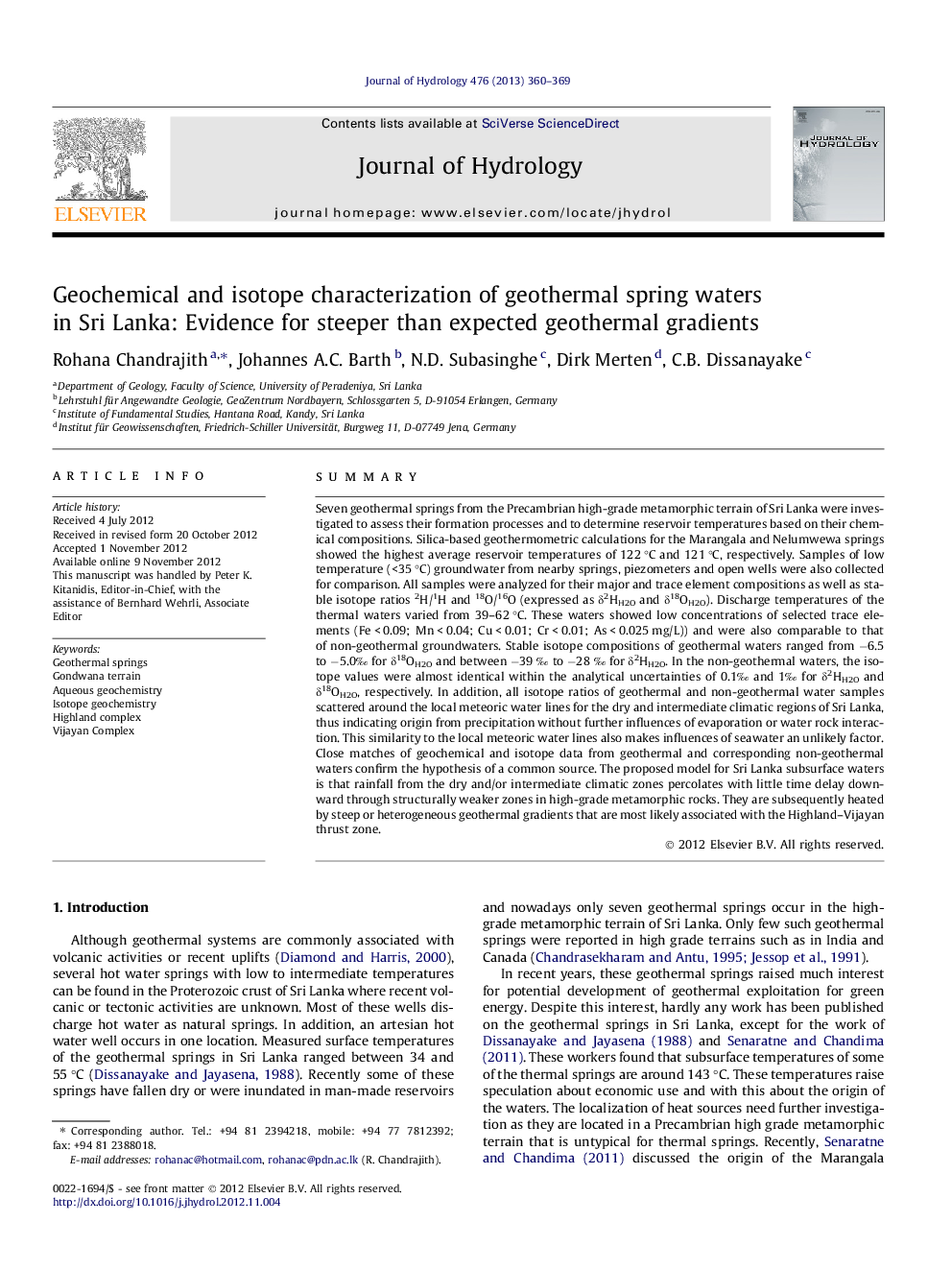| کد مقاله | کد نشریه | سال انتشار | مقاله انگلیسی | نسخه تمام متن |
|---|---|---|---|---|
| 4576626 | 1629972 | 2013 | 10 صفحه PDF | دانلود رایگان |

SummarySeven geothermal springs from the Precambrian high-grade metamorphic terrain of Sri Lanka were investigated to assess their formation processes and to determine reservoir temperatures based on their chemical compositions. Silica-based geothermometric calculations for the Marangala and Nelumwewa springs showed the highest average reservoir temperatures of 122 °C and 121 °C, respectively. Samples of low temperature (<35 °C) groundwater from nearby springs, piezometers and open wells were also collected for comparison. All samples were analyzed for their major and trace element compositions as well as stable isotope ratios 2H/1H and 18O/16O (expressed as δ2HH2O and δ18OH2O). Discharge temperatures of the thermal waters varied from 39–62 °C. These waters showed low concentrations of selected trace elements (Fe < 0.09; Mn < 0.04; Cu < 0.01; Cr < 0.01; As < 0.025 mg/L)) and were also comparable to that of non-geothermal groundwaters. Stable isotope compositions of geothermal waters ranged from −6.5 to −5.0‰ for δ18OH2O and between −39 ‰ to −28 ‰ for δ2HH2O. In the non-geothermal waters, the isotope values were almost identical within the analytical uncertainties of 0.1‰ and 1‰ for δ2HH2O and δ18OH2O, respectively. In addition, all isotope ratios of geothermal and non-geothermal water samples scattered around the local meteoric water lines for the dry and intermediate climatic regions of Sri Lanka, thus indicating origin from precipitation without further influences of evaporation or water rock interaction. This similarity to the local meteoric water lines also makes influences of seawater an unlikely factor. Close matches of geochemical and isotope data from geothermal and corresponding non-geothermal waters confirm the hypothesis of a common source. The proposed model for Sri Lanka subsurface waters is that rainfall from the dry and/or intermediate climatic zones percolates with little time delay downward through structurally weaker zones in high-grade metamorphic rocks. They are subsequently heated by steep or heterogeneous geothermal gradients that are most likely associated with the Highland–Vijayan thrust zone.
Figure optionsDownload as PowerPoint slideHighlights
► We studied geochemical and isotope compositions of geothermal and natural springs.
► Geothermometric calculation indicated mean reservoir temperatures of about 120 °C.
► Hot water springs are recharged by local meteoric rain.
► During subsurface circulations, water is heated by a steep geothermal gradient.
Journal: Journal of Hydrology - Volume 476, 7 January 2013, Pages 360–369